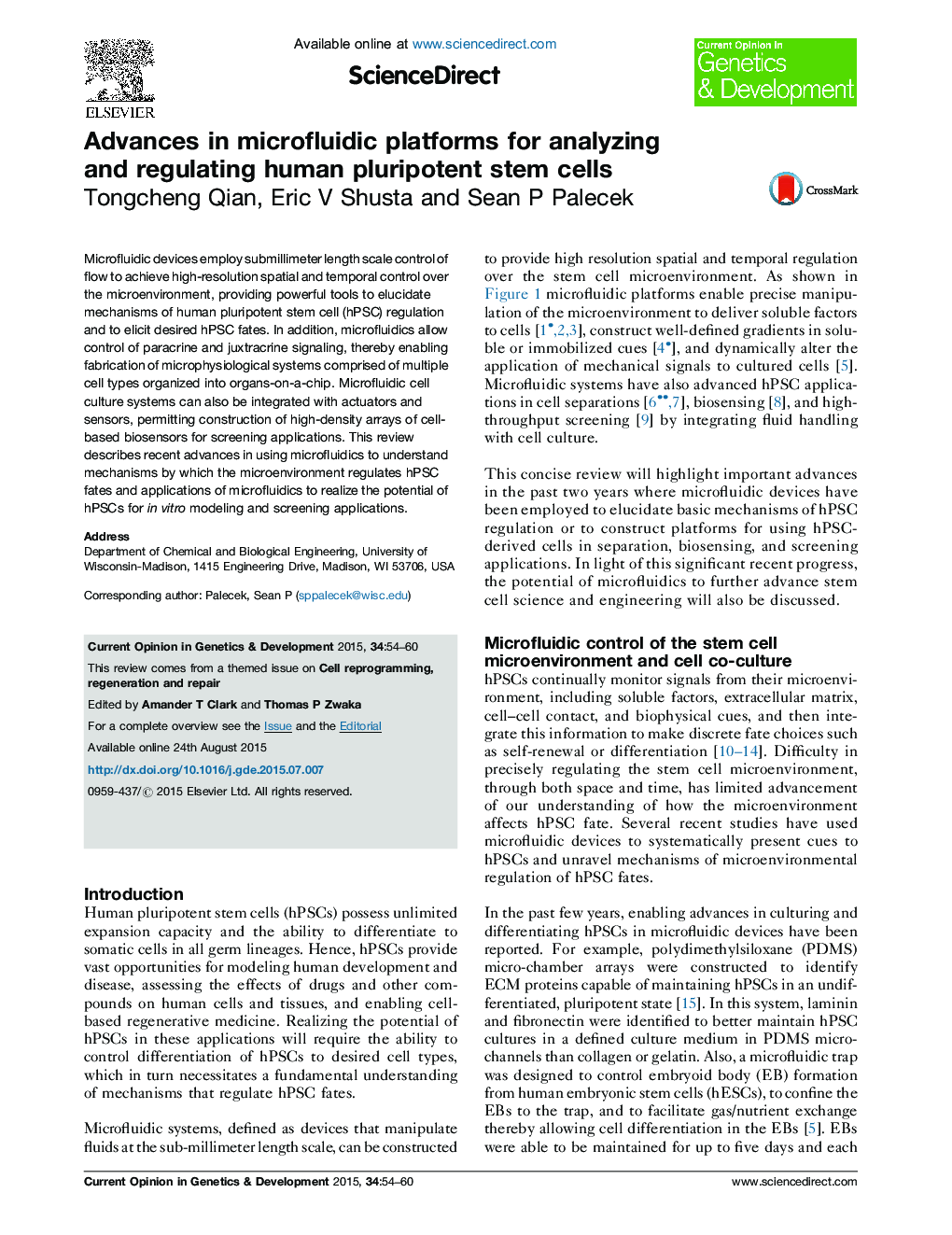| Article ID | Journal | Published Year | Pages | File Type |
|---|---|---|---|---|
| 5893086 | Current Opinion in Genetics & Development | 2015 | 7 Pages |
Microfluidic devices employ submillimeter length scale control of flow to achieve high-resolution spatial and temporal control over the microenvironment, providing powerful tools to elucidate mechanisms of human pluripotent stem cell (hPSC) regulation and to elicit desired hPSC fates. In addition, microfluidics allow control of paracrine and juxtracrine signaling, thereby enabling fabrication of microphysiological systems comprised of multiple cell types organized into organs-on-a-chip. Microfluidic cell culture systems can also be integrated with actuators and sensors, permitting construction of high-density arrays of cell-based biosensors for screening applications. This review describes recent advances in using microfluidics to understand mechanisms by which the microenvironment regulates hPSC fates and applications of microfluidics to realize the potential of hPSCs for in vitro modeling and screening applications.
